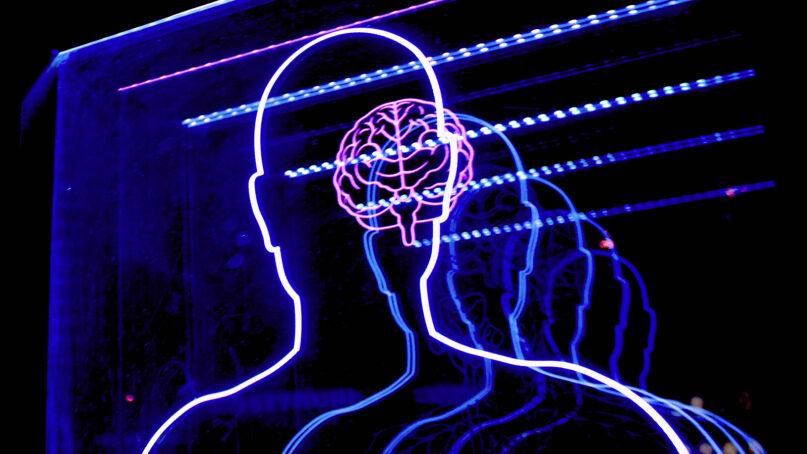(RNS) — When is one dead?
That discomfiting but crucial question is addressed by the Uniform Determination of Death Act, which, since its introduction in the early 1980s, has been adopted by 37 states and the District of Columbia. It defines death as either the irreversible halting of circulatory and respiratory functions or the irreversible cessation of all brain function. These seem to be reasonable criteria.
But the issue of “brain death” is not as straightforward as it might at first seem. Which is why the Uniform Law Commission, a nonprofit entity that works to make sure state laws are consistent across the United States, appointed a drafting committee in 2021 to update the death act. But after the committee’s medical professionals and bioethicists could not come to an agreement over whether “irreversible” should be changed to “permanent” — possibly giving doctors and hospitals more say over when a patient had died — the drafting committee stopped work last fall.
One challenge lies in the fact that brain death itself can be defined in different ways. Some consider the cessation of electrical activity (as determined by an electroencephalogram, or EEG) in the body of the brain itself to meet the criterion; others say that the functioning of the hypothalamus (which helps regulate heart rate, body temperature, hunger and the sleep-wake cycle) and/or the brainstem (which regulates breathing, blood pressure, heart rate and sleep) should be determinative.
But there are those, such as bioethicist Michael Nair-Collins, a professor at Florida State University’s medical school, who challenge the very idea that cessation of brain function — even all brain and brain-related functions — should define death.
A recent exploration of the topic on National Public Radio cited the case of a California girl, Jahi McMath, who was declared brain-dead at age 13 in 2013 but whose family insisted, against doctors’ advice, on maintaining her on life support equipment, even moving with her to New Jersey, where for a time she was cared for in a Catholic hospital.
Although she never recovered and eventually died, over the years that McMath was on life support, she continued to grow and develop. NPR quoted neurologist Dr. D. Alan Shewmon as challenging the California doctors’ decision that McMath had actually died years earlier, when they recommended disconnecting her from life support. “I’ve never heard,” Shewmon drolly noted, “of a corpse that underwent puberty before.”
Proponents of making the lack of brain function a conclusive criterion of death argue that there is no hope for people who have suffered that diagnosis to meaningfully recover. But likelihood of recovery begs the essential question: Is the patient, whatever the prognosis, currently alive?
Machines and observations can measure electrical activity in the brain, but the determination of subtle consciousness, of when a human being has ceased to meaningfully exist, is something no mechanical device can calibrate.
And so the issue of when death has conclusively occurred is not a medical question but, rather, a philosophical — or, better, theological — one.
As an Orthodox Jew, I look in such matters to halacha, or Jewish religious law, and its most renowned interpreters. The most respected rabbinic analysts who have researched the relevant halachic sources on the issue do not consider cessation of detectable brain function to constitute death. For them, a diagnosis of brain death doesn’t constitute carte blanche for removing vital organs. Doing so, according to them, is tantamount to killing the donor.
To most Americans, of course, Orthodox Jewish scholars’ opinions are likely of limited import. But all of us still need to recognize that the question of whether detectable brain activity alone constitutes human life is essentially a religious one. And need, further, to take note of an elephant in the hospital room.
Fine-tuning the definition of death impacts more than the loved ones of the dying. It informs the ethics of procuring organs and tissues for transplantation. That pronouncement allows doctors to harvest vital organs before the patient is taken off mechanical life support. Removing organs while the patient’s blood is still oxygenated and circulating greatly enhances (and is sometimes crucial to) the preservation of an organ’s viability.
Some would say that the real question of brain death revolves around the fact that there is a large surplus of people in need of organs, and a concomitant dearth of suitable donors. According to the American Institute for Economic Research, over 100,000 Americans await organ transplants, and over 6,000 die annually while waiting.
That calculus, some fear, combined with acceptance of brain death as determining the end of a life, may lead to a particularly slippery slope, at whose bottom lies the viewing of very old, very young or very infirm as mere repositories of organs.
The shortage of organs for transplantation is a tragic reality, and ways of alleviating it — whether by advancing methods of preserving organs after conclusive death or by the development of artificial organs — should be prioritized.
But the sad reality of organ shortages should not be permitted to push physicians to decide, on the sole evidence of EEG readings, that a life has been fully lived.
(Rabbi Avi Shafran is director of public affairs for Agudath Israel of America, a national Orthodox Jewish organization. He blogs at rabbishafran.com. The views expressed in this commentary do not necessarily reflect those of Religion News Service.)





